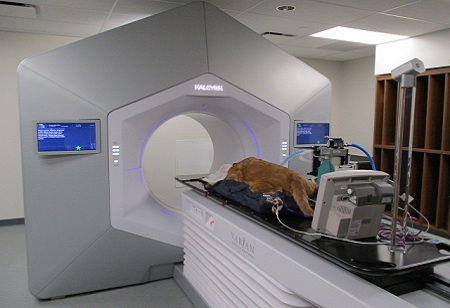Fiona Catherine Jerry | Friday, 05 May 2023

Technologies are revolutionizing the way veterinarians diagnose and treat diseases in animals. Veterinary medicine embraces these technologies to provide more efficient and cost-effective medical care. These technologies range from 3D printing and robotic surgery to artificial intelligence and telemedicine. They enable veterinarians to diagnose diseases more accurately, monitor and treat animal health more effectively, and provide the best care for their patients.
These technologies not only improve the quality of care but also enable veterinarians to save more time and money. This allows them to focus on delivering the best possible care. Furthermore, they help to reduce the risk of misdiagnosis and decrease the cost of medical treatments. Additionally, these technologies enable veterinarians to gain a better understanding of the animal's health by collecting real-time data that can be analyzed and used to make informed decisions.
As a result, veterinarians can provide more accurate and faster diagnoses with fewer resources, resulting in better health outcomes for animals. Let us know more about the emerging technologies in Veterinary Medicine in the subsequent paragraphs
3D printing can be used to create prosthetics for animals that have lost limbs, or it can be used to create custom items such as feeding bowls or bedding for animals with special needs. Additionally, 3D printing can be used to create models of organs or bones for veterinary surgeons to use during surgery. It can also be used to create custom orthotics to help treat animals with lameness or mobility issues. 3D printing can also be used to create personalized toys or treats for animals, as well as assistive devices such as ramps to help them access areas they may not be able to access independently. 3D printing has become a valuable tool in the veterinary industry. It can be used to quickly and efficiently make custom items that can help improve the lives of animals. Additionally, it is cost-effective and can be used to create items that would otherwise be difficult to obtain. 3D printing can also be used to create prosthetics for animals with mobility issues, as well as, create custom medical devices for animals that need medical assistance.
Veterinary medicine has been transformed by robotics through better diagnosis, reduction of risk, and improved accuracy in surgery. Robotics has allowed veterinarians to streamline and improve their workflow while also reducing the risk of human error. Additionally, robotics has allowed for greater precision and accuracy in surgeries, leading to improved outcomes for animals. Robotics has also enabled veterinarians to perform complex surgeries with greater speed and efficiency. This has resulted in shorter recovery times and better outcomes for animals. Ultimately, robotics has revolutionized veterinary care, allowing veterinarians to provide better care and treatment for animals. Furthermore, the use of robotics has enabled veterinarians to reduce the costs of medical care, making veterinary care more accessible to people.
AI can be used to diagnose diseases, detect changes in animal behavior, and assist in medical treatments. It can also be used to monitor vital signs, automate surgical procedures, and improve patient safety. AI can help make veterinary medicine more efficient and accurate. AI can also be used to diagnose medical conditions in animals faster and more accurately. It can also help veterinarians make better-informed decisions, as AI can provide insight into animals' behavior and health that would otherwise be impossible to detect. For instance, AI-powered sensors placed inside dog collars can detect changes in movement, temperature, and humidity to predict when a dog might be sick.
Digital therapeutics use technology to provide medical treatments for animals. They are designed to deliver personalized, evidence-based interventions to improve animal health and wellness. They can be used to treat chronic diseases, manage behavioral issues, and improve physical health. Digital therapeutics can also be used to monitor the animal's health and provide real-time feedback to veterinarians. This allows for better diagnosis and treatment of diseases and conditions. Additionally, digital therapeutics can help reduce the cost of animal healthcare. For instance, digital therapeutics have been used to improve the efficacy of treatment regimens for obesity in cats, resulting in significant savings for pet owners. Ultimately, these technologies can improve diagnostic accuracy and reduce animal healthcare costs. As a whole, they revolutionize the veterinary industry. They also enable more efficient treatments and reduce the time and resources needed to track and manage animals' health records. This can help improve animal welfare and reduce the burden on veterinarians. Ultimately, these technologies can improve animal health outcomes and reduce animal suffering. They can also help to create a safer and more humane environment for animals.